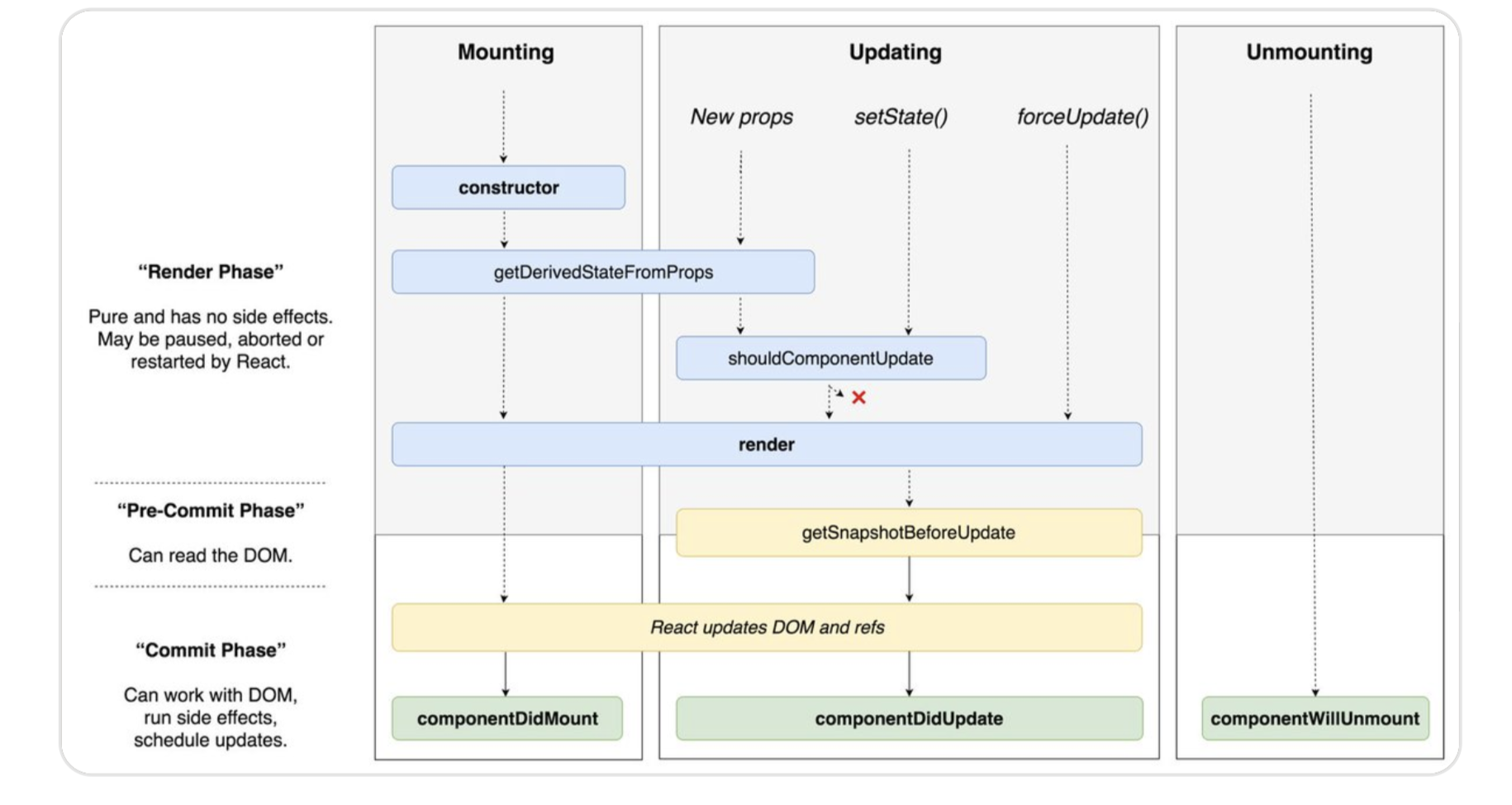a dive in react lifecycle
阿新 • • 發佈:2018-11-15
背景:我在react文件裡找生命週期的圖,居然沒有,不敢相信我是在推特上找到的。。。

正文
react v16.3 新生命週期:
- static getDerivedStateFromProps
- getSnapshotBeforeUpdata
1: getDerivedStateFromProps, 在render之前,返回一個obj更新state,或者null不更新state, 這個生命週期的使用場景是:state根據props變化。
static getDerivedStateFromProps(nextProps: SearchProps, prevState: SearchState) {
const { location }
2: getSnapshotBeforeUpdata 觸發時間:在實際dom掛載之前,虛擬dom構建之後。返回的任何資料或者null,都將作為componentDidUpdate()的引數。
getSnapshotBeforeUpdate(prevProps, prevState) {// Are we adding new items to the list? // Capture the scroll position so we can adjust scroll later. if (prevProps.list.length < this.props.list.length) { const list = this.listRef.current; return list.scrollHeight - list.scrollTop; } return null; } componentDidUpdate(prevProps, prevState, snapshot) { // If we have a snapshot value, we've just added new items. // Adjust scroll so these new items don't push the old ones out of view. // (snapshot here is the value returned from getSnapshotBeforeUpdate) if (snapshot !== null) { const list = this.listRef.current; list.scrollTop = list.scrollHeight - snapshot; } }
建議用法總結請移步:https://juejin.im/post/5aca20c96fb9a028d700e1ce
這裡拷貝一個我用到的一種情況:props更新時重新請求
// old componentWillReceiveProps(nextProps) { if (nextProps.id !== this.props.id) { this.setState({externalData: null}); this._loadAsyncData(nextProps.id); } } // new static getDerivedStateFromProps(nextProps, prevState) { // Store prevId in state so we can compare when props change. if (nextProps.id !== prevState.prevId) { return { externalData: null, prevId: nextProps.id, }; } // No state update necessary return null; } componentDidUpdate(prevProps, prevState) { if (this.state.externalData === null) { this._loadAsyncData(this.props.id); } }
我的使用:
componentDidUpdate(prevProps: SearchProps, prevState: SearchState) { const { keyword, needExact } = this.state if (keyword && (keyword !== prevState.keyword)) { // 上一次的state和這一次的對比,如果需要,就進行fetch資料,並setstate。其中this.state就是getDerivedStateFromProps返回的 更新後的state if (needExact) { this._fetchExactData(this.state.keyword) this.setState({ needExact: false }) } else { Promise.all([this._fetchInitData('document'), this._fetchInitData('employee')]) .then(values => { let pageState = 0 const { state } = this.props.location if (state && state.type) { pageState = state.type } else if (!values[1] && values[0]) { pageState = 1 } this.setState({ pageState, }) }) } } }
最後,記錄一個小知識點:
由於state變化,需要出發請求資料的,在componentDidUpdate中進行。
